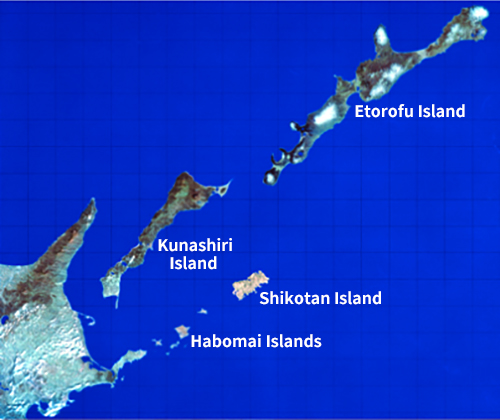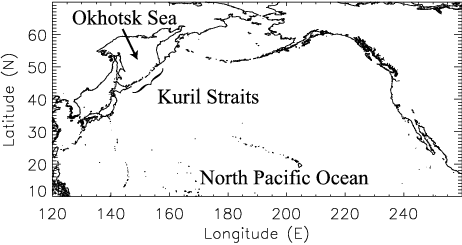Kuril Islands, Russian Kurilskiye Ostrova, Japanese Chishima-rettō, archipelago in Sakhalin oblast (province), far-eastern Russia. Russia maintains that all the Kuril Islands, including those that Japan calls the Northern Territories, are legally a part of Russia as a result of World War II, and the acquisition was as proper as any other change of international boundaries following the war. “Japan renounces all right, title and claim to the Kurile Islands, and to that portion of Sakhalin and the islands adjacent to it over which Japan acquired sovereignty as a consequence of the Treaty of Portsmouth of 5 September 1905.”
As of 2013, 19,434 people inhabited the Kuril Islands. These include ethnic Russians, Ukrainians, Belarusians, Tatars, Nivkhs, Oroch, and Ainus. Russian Orthodox Christianity is the main religion. Some of the villages are permanently manned by Russian soldiers (especially in Kunashir following recent tensions).
The Kuril Islands sit atop a seismic region in the Pacific known as the “Ring of Fire,” which has produced this chain that features over 100 volcanoes, more than 35 of which are still active. Do not forget your camera because a sail through the Kurils puts a diverse range of incredible volcanoes on display.
Etorofu Strait
In response to a Soviet protest of the November 30, 1984, transit by USS Sterett (CG 31) and USS John Young (DD 973) of Etorofu Strait separating the Habomais islands (occupied by the Soviet Union – now Russia – and claimed by Japan), the United States replied in a diplomatic note which read as follows:
The Embassy of the United States of America refers the USSR Ministry of Foreign Affairs to Ministry of Foreign Affairs Note Number 81/USA of December 3, 1984 concerning the transit of the Etorofu Strait by vessels of the United States Navy.
The Embassy wishes to state that on November 30, 1984, the USS Sterett and the USS John Young were, when navigating through the Etorofu Strait, exercising the right of transit passage in accordance with international law. Note 81/USA of December 3, 1984 implies that the rite of passage of foreign warships through straits such as Etorofu Strait is limited to innocent passage. The United States Government rejects this implication, since Etorofu Strait is one used for international navigation between one part of the high seas or an exclusive economic zone and another part of the high seas or an exclusive economic zone; the strait is therefore subject to the regime of transit passage.
Moreover, the United States Government rejects the claim of the Soviet Union that it may lawfully restrict transit passage of foreign warships through straits of this type, or innocent passage of foreign warships through the Soviet territorial sea in other coastal areas, to a few specified locations. The regulations referred to in Note 81/USA have the effect of hampering both transit passage and innocent passage and therefore contravene international law.
As regards the claim of the USSR that the waters in question are territorial waters of the USSR, the Ministry of Foreign Affairs is referred to the diplomatic note of the United States Government dated May 23, 1957. In sum, the allegations contained in Note 81/USA of December 3, 1984 are unacceptable, since they have no legal foundation.

Golovnina Strait
In response to a Soviet protest of the June 8, 1986, transit by USS Francis Hammond (FF 1067) of Golovnina Strait separating two other southern Kuril islands (occupied by the Soviet Union – now Russia – and claimed by Japan), the United States replied in a diplomatic note which read as follows:
During the incident in question, the USS Francis Hammond was exercising the right of transit passage through a strait used for international navigation in accordance with customary international law as reflected in Part III of the 1982 United Nations Convention on the Law of the Sea. The strait involved in this incident Golovnina Strait – constitutes a strait used for international navigation and is subject to the regime of transit passage. The transit of the USS Francis Hammond through the strait was fully consistent with the regime of transit passage, and did not threaten the sovereignty, territorial integrity, or political independence of the Soviet Union. The United States notes the inference in the Ministry’s statement [of June 11, 1986,] that the innocent passage of foreign warships in the Soviet territorial sea may only be exercised along routes commonly used for international navigation and that, in the vicinity of the Kuril Islands, the only route is that through the fourth Kuril strait. The United States rejects the Ministry’s suggestion. The applicable rite of passage through straits such as these is the right of transit passage, not the right of innocent passage.
The United States further notes that all states may exercise the right of innocent passage through the territorial sea of other states if such passage is consistent with the definition of that passage, i.e. continuous and expeditious transit for the purpose of traversing the territorial sea without entering internal waters or calling at a roadstead or port facility outside internal waters; or proceeding to or from internal waters on a call at such roadstead or port facility. In any case, the incident in question occurred in the Golovnina Strait, an international strait in which the right of straits transit passage, and not innocent passage, applies. Although an international strait must by definition consist wholly or partly of territorial waters, it is the right of transit passage, and not innocent passage, which applies in those waters unless the exceptions contained in the Law of the Sea Convention articles 38(1) or 45 apply, in which case non‑suspendable innocent passage applies.
The United States has at no time acquiesced in the proposition that the fourth Kuril strait constitutes the only route which may be used for international navigation in the vicinity of the Kuriles.
As the Golovnina Strait constitutes an international strait as defined in article 37 of the Law of the Sea Convention, the principal justification for not applying the right of transit passage to it would be that there exists a strait of similar convenience in accordance with the Law of the Sea Convention article 38(1).
As article 38(1) provides, that justification can only be invoked if the strait to which transit passage is not to be applied is formed by an island of a state bordering the strait and its mainland. It is the view of the United States that the Golovnina Strait does not constitute such a strait, in that it does not fall between the mainland and an island adjacent thereto. The USSR therefore has no legal basis on which to insist that international navigation pass only through the fourth Kuril strait. Nor does the Golovnina Strait constitute an article 45(1)(b) strait, i.e. a strait between a part of the high seas or an exclusive economic zone and the territorial sea of a foreign state.
The United States further wishes to underscore that a strait used for international navigation derives that status not from coastal state legislation which designates it as such, but rather as a direct result of international maritime patterns which establish state practice. If this were not the case, the very purpose of the customary international legal regime of straits transit passage, providing for automatic, predictable and impartial exercise of international navigation freedoms, would be vitiated. For these reasons the United States does not recognize the validity of the USSR’s designation of the fourth Kuril strait as the only Kuril strait for international navigation.
For the above reasons, the United States rejects the June 11 protest of the Soviet Union regarding the transit of USS Hammond through the Golovnina strait and maintains that the transit was a lawful exercise of the customary law right of straits transit passage. Accordingly, it reserves its rights and those of its nationals to continue to exercise that right in the Golovnina Strait, and in all straits used for international navigation.
In rejecting this protest, the USG notes the fact that notwithstanding the signature by the USSR of the 1982 United Nations Convention on the Law of the Sea and the recognition by the United States that the navigation articles of that Convention are generally reflective of customary international law, the USSR and the U.S. continue to display significant unresolved differences in their interpretation of the law of the sea, particularly the right of innocent passage and straits transit passage. The U.S. Government invites the Government of the USSR to provide a more comprehensive analysis of the legal basis for its assertion of the right to deny transit passage in the international straits between the Kuril islands.

